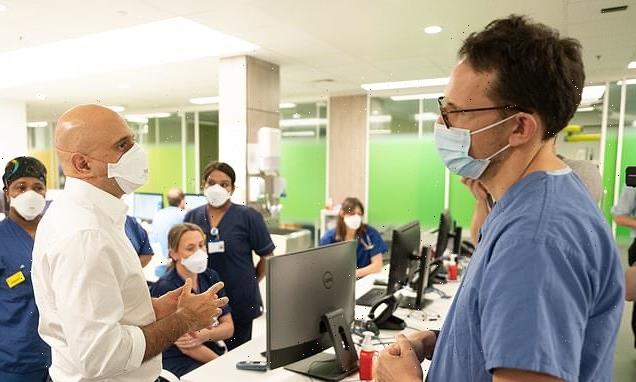Former CDC director: The nature of coronavirus is going to keep changing
Former CDC Director Dr. Robert Redfield on President Biden being at odds with the CDC over fast omicron surge.
The California Department of Public Health issued new guidance allowing hospitals and health networks to force COVID-postive healthcare workers to continue working if they are asymptomatic.
“The department is providing temporary flexibility to help hospitals and emergency services providers respond to an unprecedented surge and staffing shortages. Hospitals have to exhaust all other options before resorting to this temporary tool. Facilities and providers using this tool, should have asymptomatic COVID-19 positive workers interact only with COVID-19 positive patients to the extent possible,” the health department said in a statement.
The health department issued the guidance Saturday, and outlines that healthcare workers don’t have to isolate or test negative and can immediately return to work if they are asymptomatic.
Nurse is comforting a covid patient at the ICU
(iStock)
The guidance is in effect until Feb. 1 and comes as the omicron variant of the virus spikes across the nation. Positive healthcare workers will need to wear N-95 respirator masks.
The announcement sparked outrage from the SEIU, as well as other health officials and workers in the state.
“Healthcare workers and patients need the protection of clear rules guided by strong science. Allowing employers to bring back workers who may still be infectious is one of the worst ideas I have heard during this pandemic, and that’s really saying something,” Bob Schoonover, President of SEIU California and Executive Director of SEIU California, said according to CBS Sacramento.
Staffing issues have plagued hospitals across the country as the omicron variant of the virus spikes, including in California where vaccine mandates were put into effect last year requiring health workers to get vaccinated or face termination. Health giant Kaiser Permanente suspended more than 2,000 unvaccinated employees in October and said those who still have not been vaccinated face termination this month.
The president of the California Nurses Association, Sandy Reding, said the health department’s move will put patients at risk.
“We are very concerned,” she said, according to NBC Bay Area. “If you have health care workers who are COVID positive care for vulnerable populations, we can spread the COVID virus inside the hospital as well.”
“If we are going to set up for the surge, let’s set up protocols to have transmission reduced. Which means not have COVID positive people come to work,” Reding added.
But to Dr. George Rutherford, professor of Epidemiology at University of California San Francisco, the move is not unprecedented.
“This is about having infected people taking care of infected people. We did this with Ebola in South Africa. We’ve done it before. It’s not the first play option in our playbook. I think staffing issues are such that it led the state to put this guidance out,” he said, according to NBC Bay Area.
Gov. Gavin Newsom’s office did not immediately respond to Fox News’ request for comment on the guidance.
California Gov. Gavin Newsom, left, receives a Moderna COVID-19 vaccine booster shot from California Health and Human Services Secretary Dr. Mark Ghaly at Asian Health Services in Oakland, Calif., Wednesday, Oct. 27, 2021. In a letter to health providers dated Tuesday, Nov. 9. 2021, Dr. Tomas Aragon, the State Public Health Officer, told providers they should "not turn a patient away who requesting a booster" if they are age 18 and up and it has been six months since they had their second Moderna or Pfizer vaccine or two months since their single Johnson & Johnson shot. (AP Photo/Jeff Chiu, File)
(AP Photo/Jeff Chiu, File)
Staffing issues have been reported in various parts of the state, including in San Diego. The CEO of Scripps Health in San Diego said last week that six to eight health care workers are calling the hospital per hour to report they have COVID.
Young mother of small hospitalized girl talking to doctor in hospital, midsection.
(iStock)
“In the emergency departments, we do have patients that are literally stacked up 20 to 30 in some of the hospitals, waiting for an open bed that will hopefully be available when we discharge patients,” Chris Van Gorder, president and CEO of Scripps Health, told NBC 7 San Diego
Rhode Island rolled out a similar policy this month, opening the option for COVID-positive health care workers to continue working if they have mild symptoms or are asymptomatic, and if their hospital is facing a staffing crisis. The update came after the CDC’s revision on quarantine and isolation guidance for health care workers.
Source: Read Full Article





